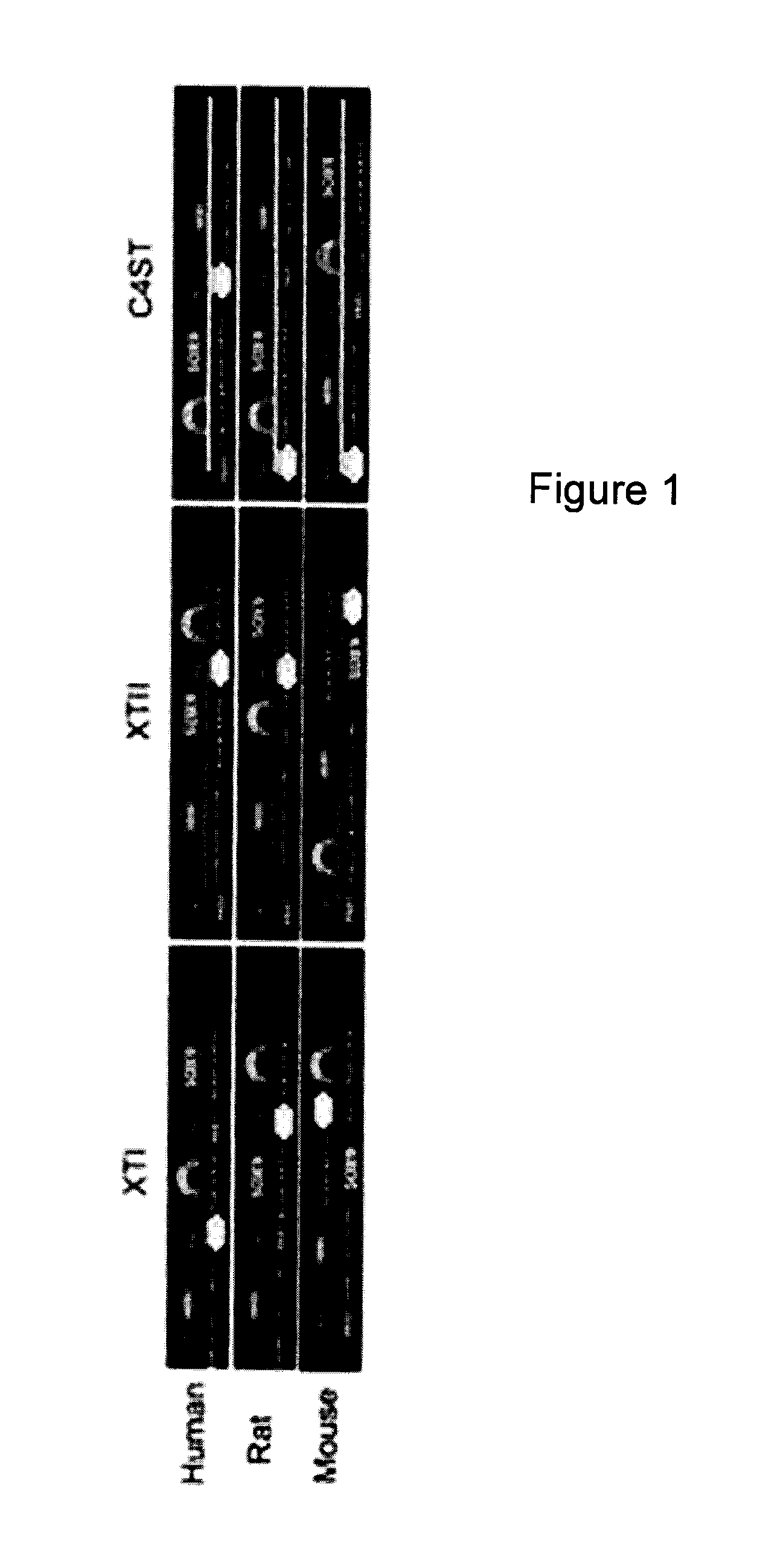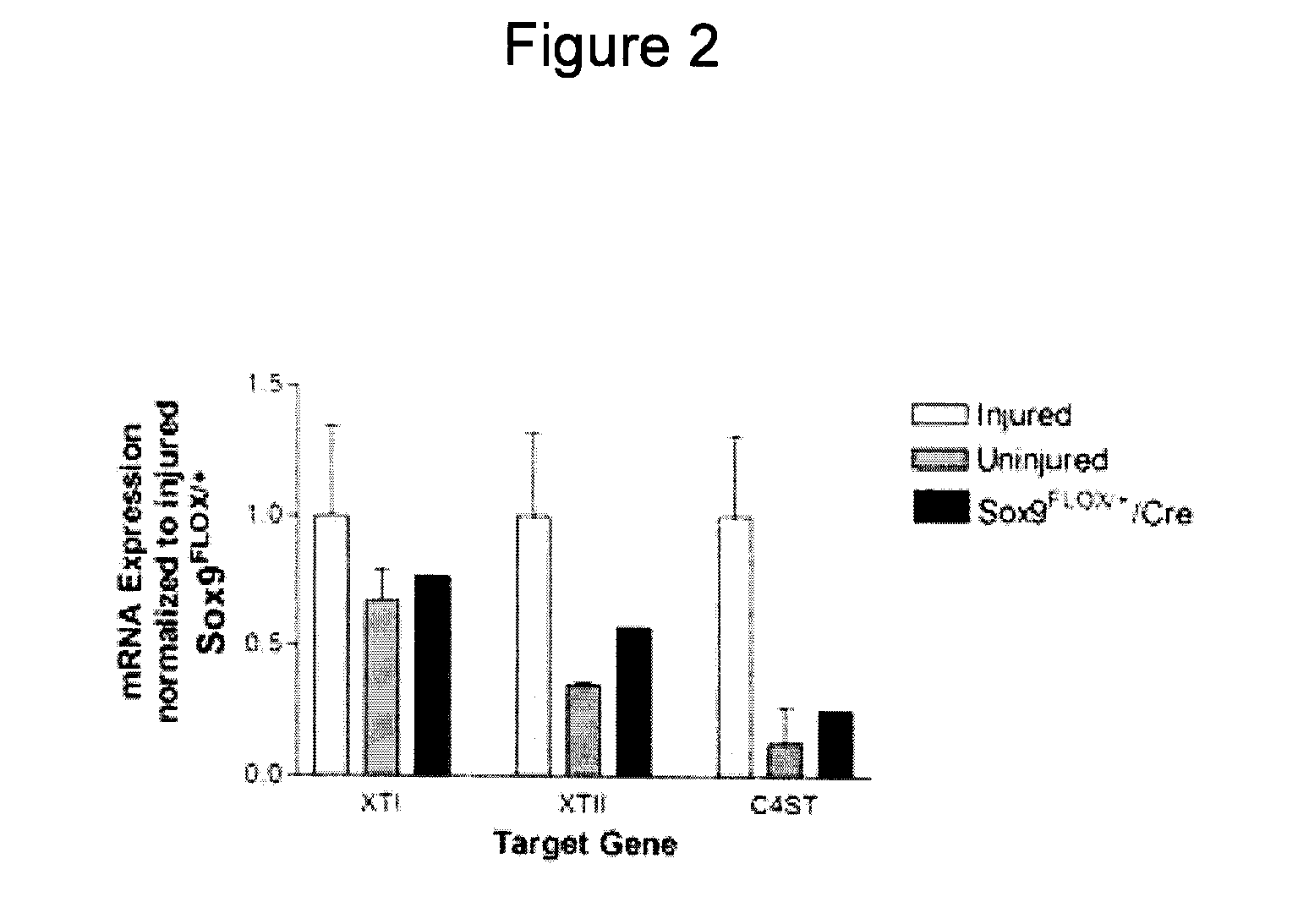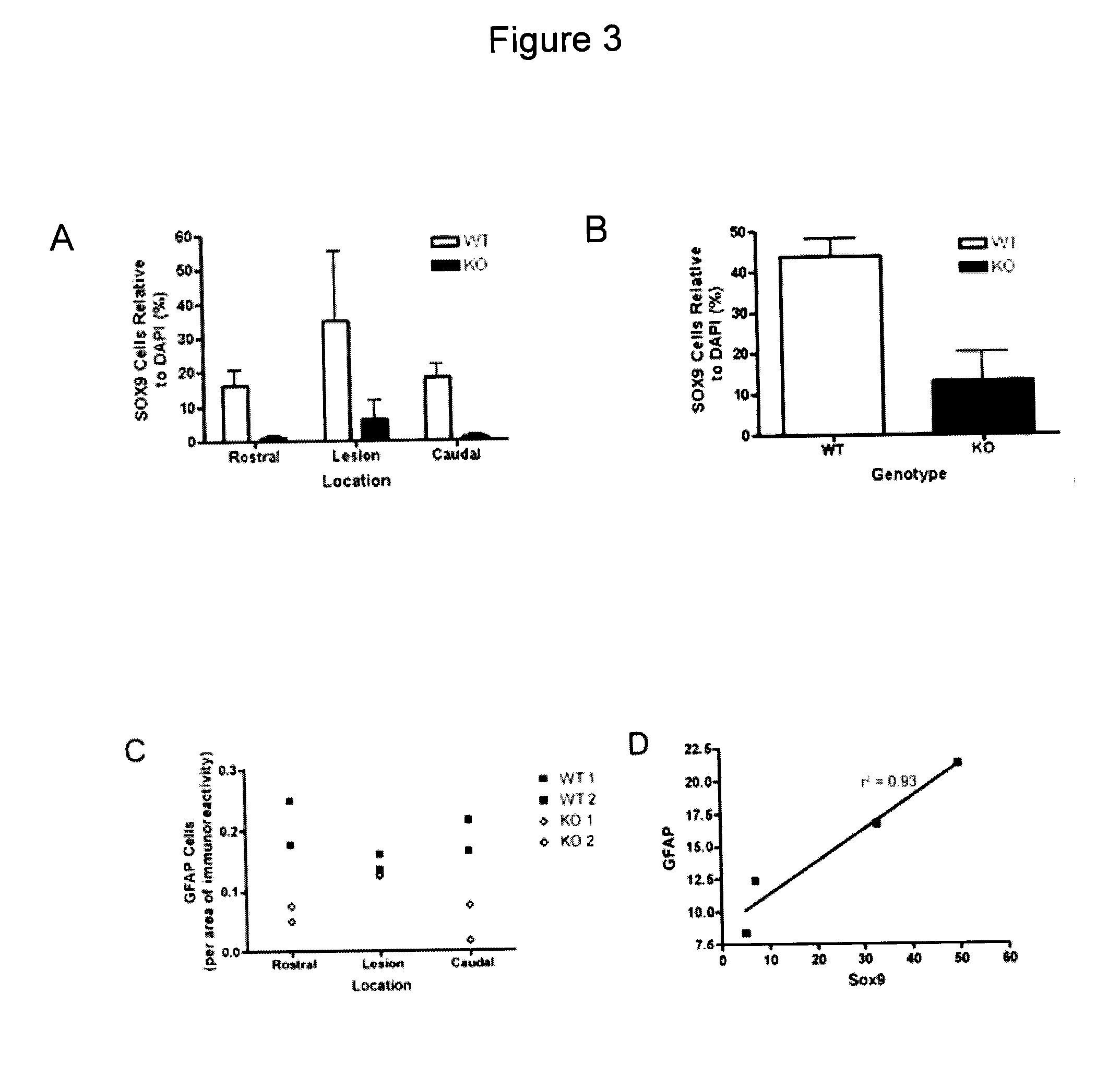Sox9 inhibitors
a technology of inhibitors and sox9, which is applied in the field of inhibition of sox9, can solve the problems of lifelong disability, no effective treatment for sci, and the impact of neurotrauma is one of the single most costly events
- Summary
- Abstract
- Description
- Claims
- Application Information
AI Technical Summary
Benefits of technology
Problems solved by technology
Method used
Image
Examples
example 1
[0052]The transcription factor, SOX9, has been determined to up-regulate the transcription of XT-I, XT-II and C4ST in primary astrocyte cultures and to down-regulate the expression of the pro-regenerative extracellular matrix (ECM) molecules, laminin and fibronectin. Consistent with the hypothesis that the CSPG genes are co-regulated, Genomatix software analysis identified 5 transcription factors with putative binding sites in all 9 of their respective promoters. The relative positioning and features of these units are illustrated in FIG. 1.
[0053]To determine whether the SOX9 up-regulation of XT-I, XT-II and C4ST expression is direct or indirect, chromatin immunoprecipitation (ChIP) assays were conducted. Chromatin immunoprecipitation (ChIP) using an anti-SOX9 antibody on cells from the gonadal ridge of either female (non-SOX9 expressing) or male (SOX9-expressing) mice demonstrates that SOX9 binds to the promoter regions of C4ST and XT-l. DNA immunoprecipitat...
example 2
Sox9 is Associated with Various CNS Disorders
[0056]In order to assess the potential role of SOX9 in human CNS injury and disease, SOX9 expression in human cases of hemorrhagic stroke (n=3), ischemic stroke (n=3), traumatic brain injury (n=2) were surveyed. Briefly, human tissues were formalin fixed and either cryosectioned or paraffin embedded and sectioned for histological testing. Sections were stained with the combinations of commonly commercially available differentially fluorescent antibodies including GFAP, CS56, and Sox9 and counterstained with the fluorescent nuclear dye DAPI. SOX9 expression could clearly be observed in GFAP positive astrocytes and in areas rich in CSPGs in samples from human tissues following Ischemic Stroke, TBI, and Spinal cord injury. Uninjured human CNS samples were void of Sox9, GFAP, and CSPG staining. Similarly immunohistochemistry staining of mouse tissues following MCAO and spinal cord injury demonstrates similar profiles as human tissues.
[0057]In...
example 3
Calmodulin Antagonists Impact SOX9 Expression in Astrocytes and SCI
[0066]The utility of calmodulin antagonists (inhibitor) to decrease SOX9 target gene expression was evaluated in cultured rat astrocytes transfected with pGL4.1 4×48 Col2a1 prepared as described in Example 1. This plasmid contains 4-48 bp SOX9-binding sites from the Col2A1 enhancer which promote luciferase reporter gene expression in cells where SOX9 is active i.e. in the nucleus. The day after transfection, cells were treated for 24 h with inhibitor in concentrations as described below and in FIG. 5 before the luciferase assay was performed. In the context of Chlorpromazine, there is an apparent dose dependent response to limiting luciferase expression in aged astrocyte cultures optimized clearly at 20 uM (FIG. 5, A,B,D). In addition, the calmodulin inhibitors W7 and W5 also demonstrated does dependent decreases in reporter activity that appeared maximally at 50 uM (FIG. 5A, D). Similarly, Fluphenazine bears structu...
PUM
| Property | Measurement | Unit |
|---|---|---|
| Fraction | aaaaa | aaaaa |
| Mass | aaaaa | aaaaa |
| Digital information | aaaaa | aaaaa |
Abstract
Description
Claims
Application Information
 Login to View More
Login to View More - R&D
- Intellectual Property
- Life Sciences
- Materials
- Tech Scout
- Unparalleled Data Quality
- Higher Quality Content
- 60% Fewer Hallucinations
Browse by: Latest US Patents, China's latest patents, Technical Efficacy Thesaurus, Application Domain, Technology Topic, Popular Technical Reports.
© 2025 PatSnap. All rights reserved.Legal|Privacy policy|Modern Slavery Act Transparency Statement|Sitemap|About US| Contact US: help@patsnap.com



